Likes
- One of the most affordable modern Ferraris available.
- The engine is a thing of beauty.
- Especially with the 6-speed manual, incredible driving experience.
- Build quality and reliability actually quite good, for a 20 year old Ferrari.
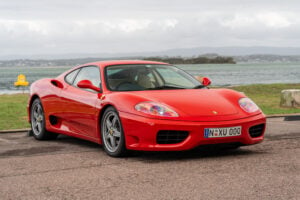
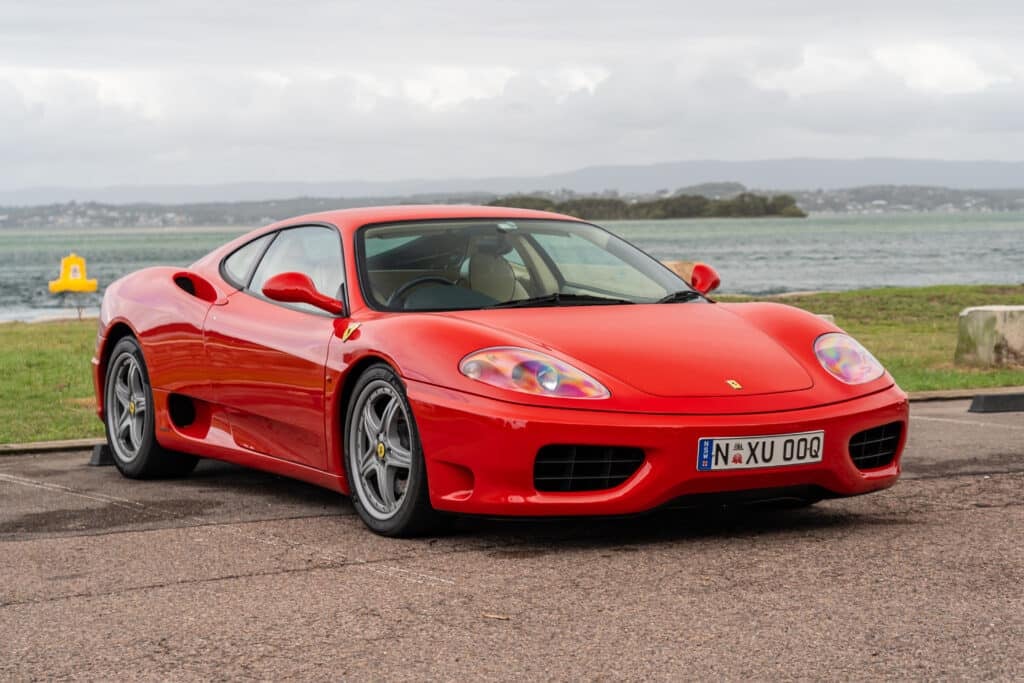
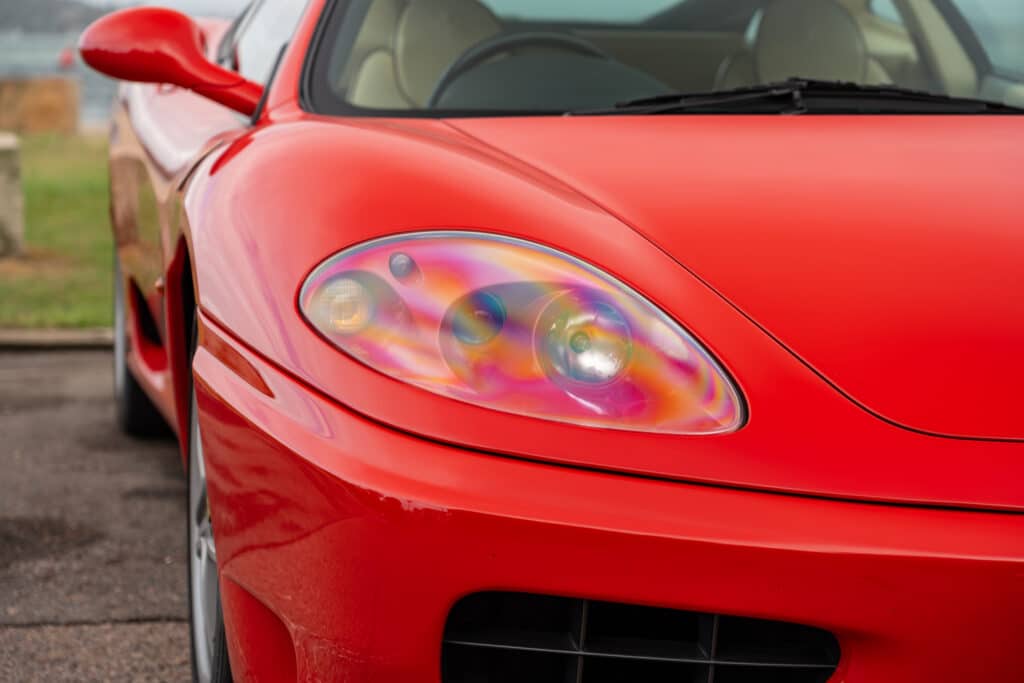

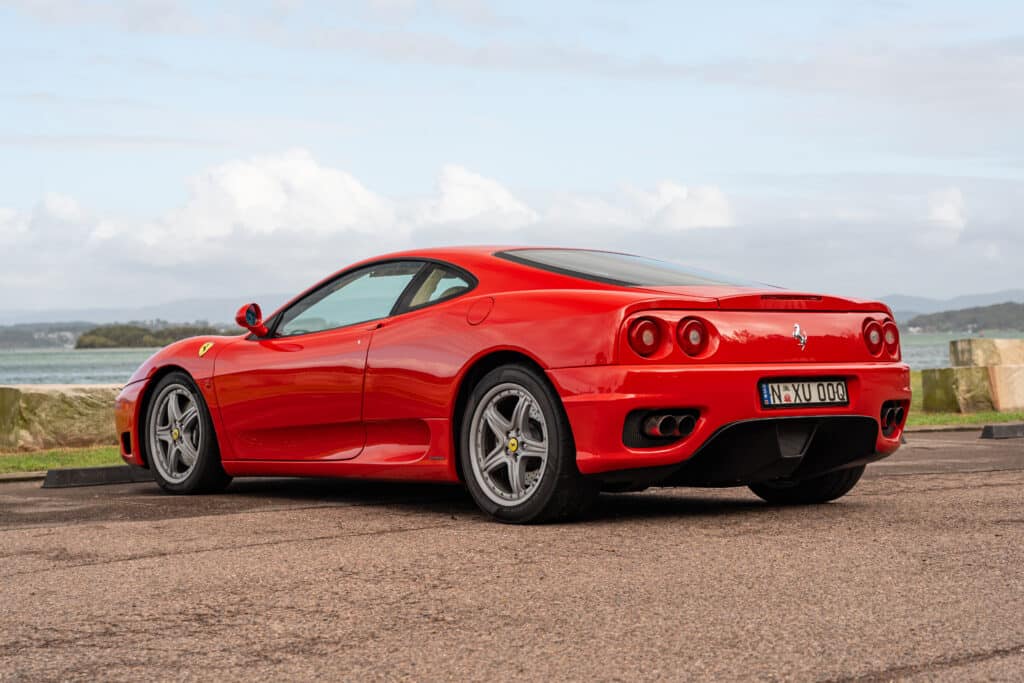
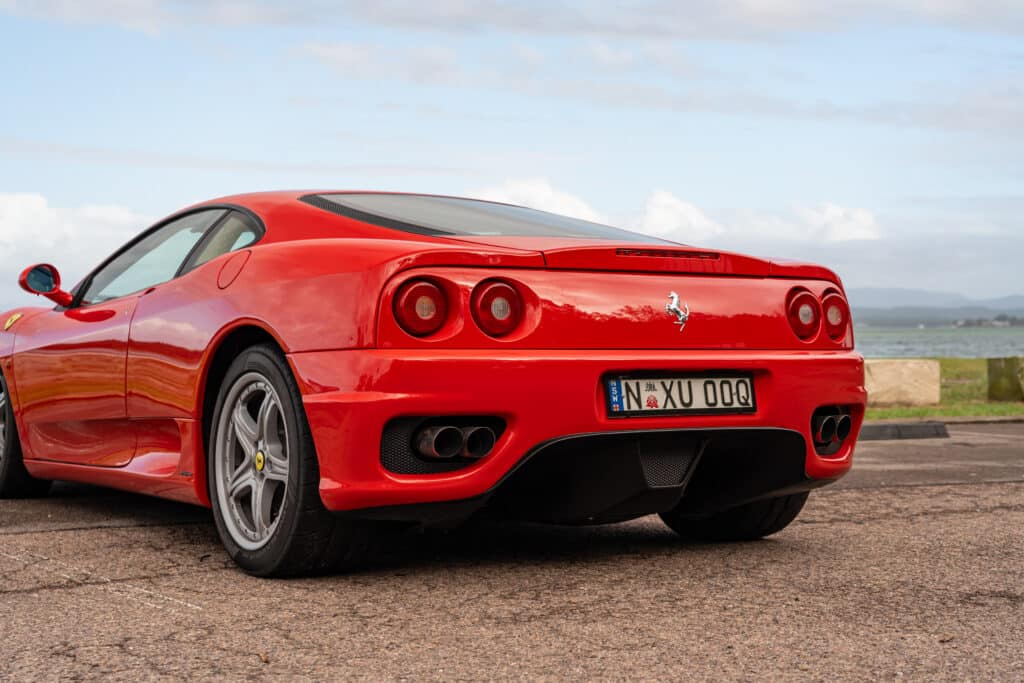
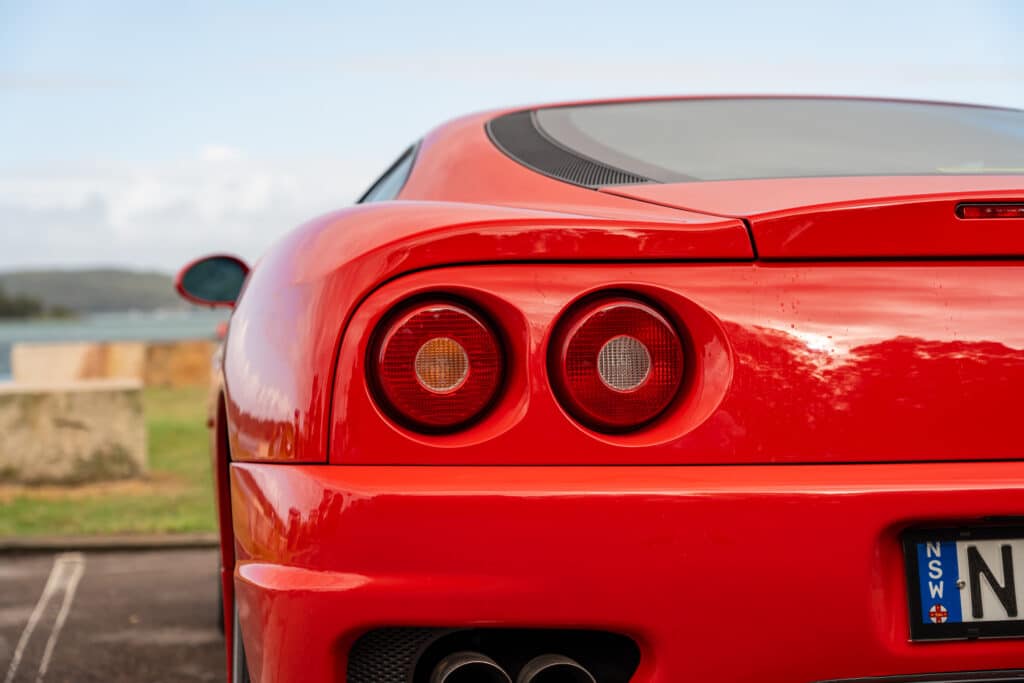
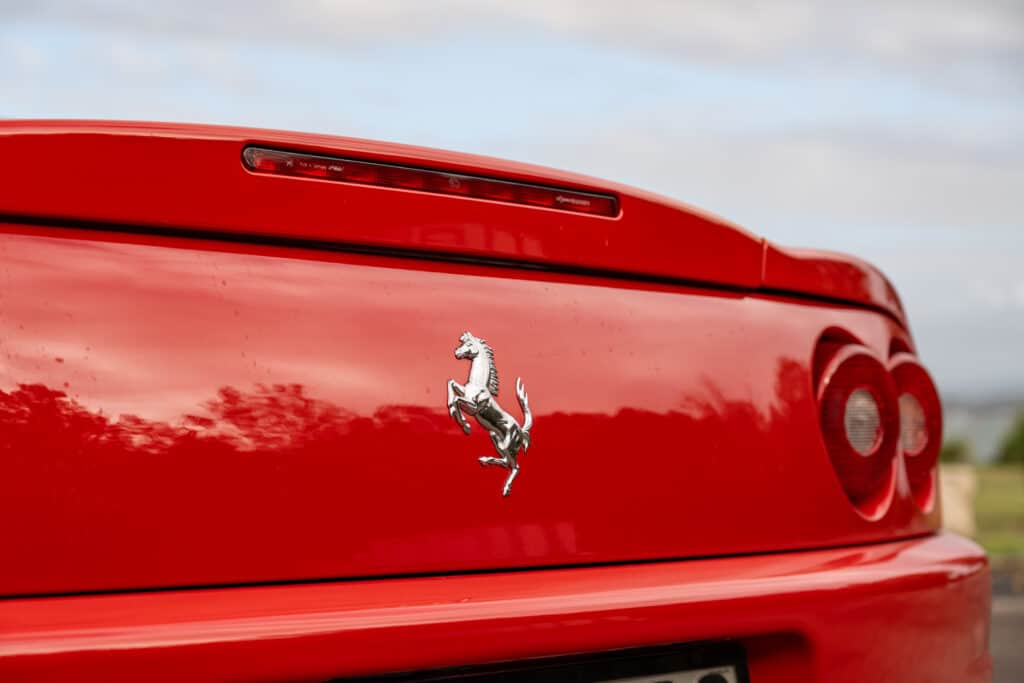

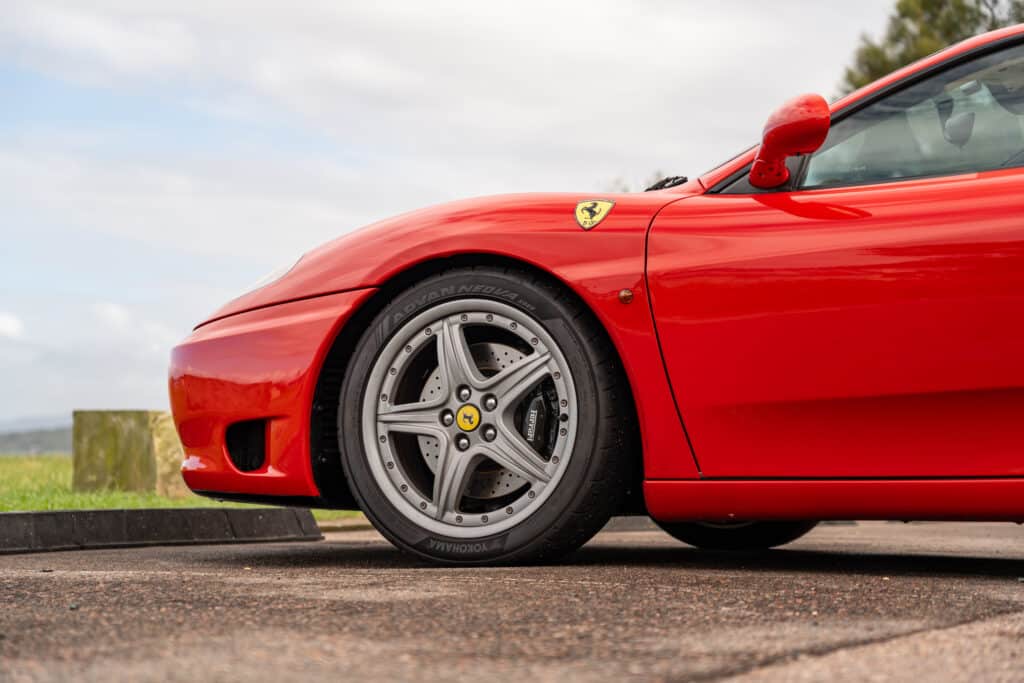
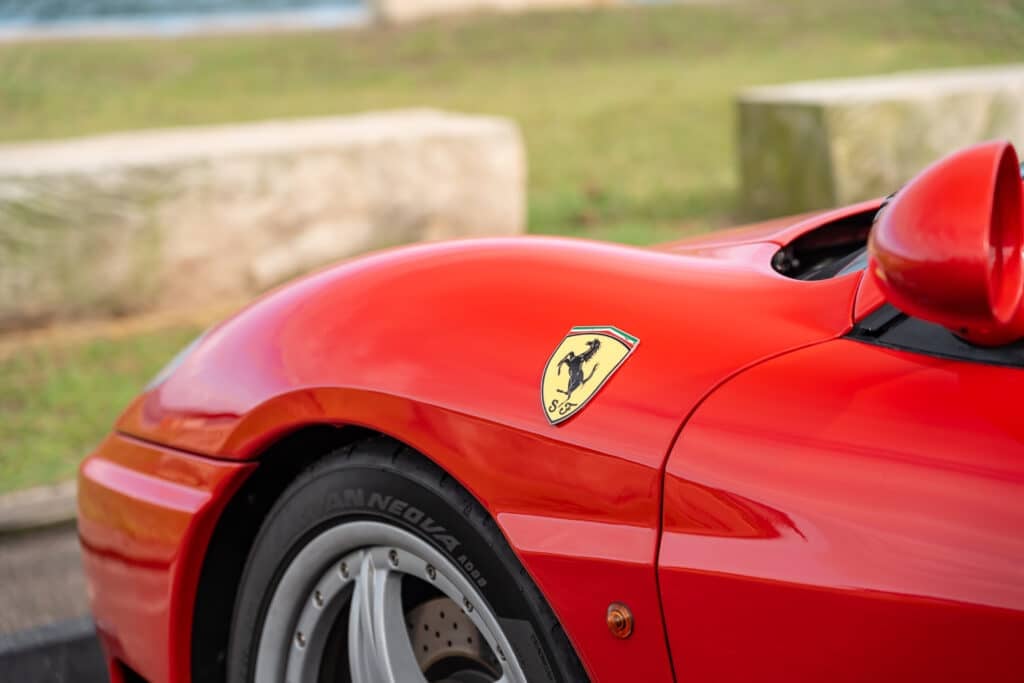
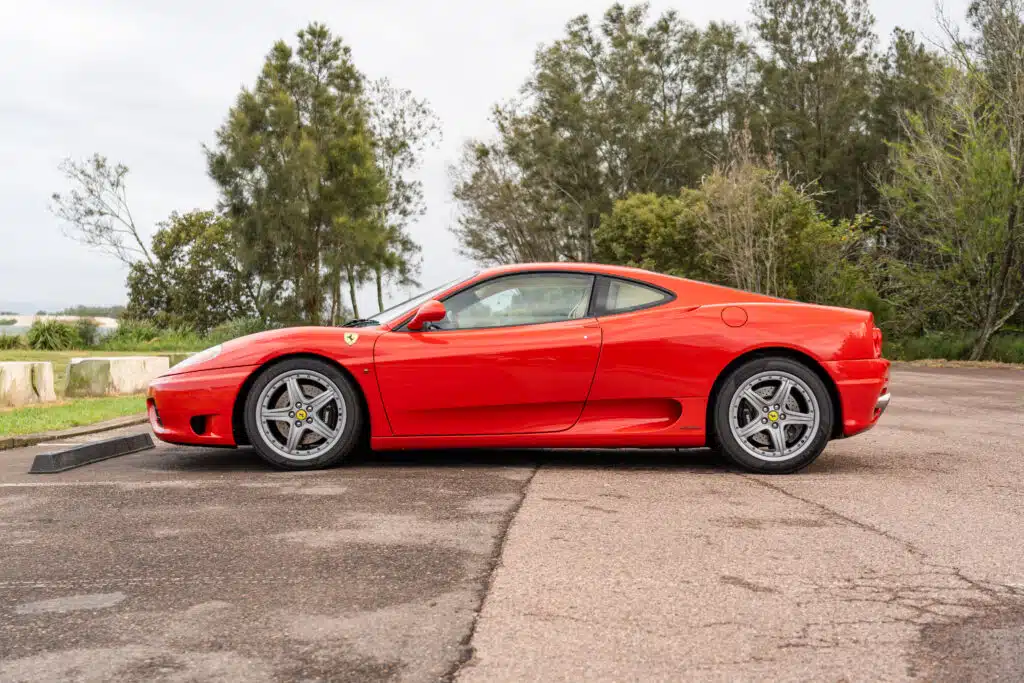
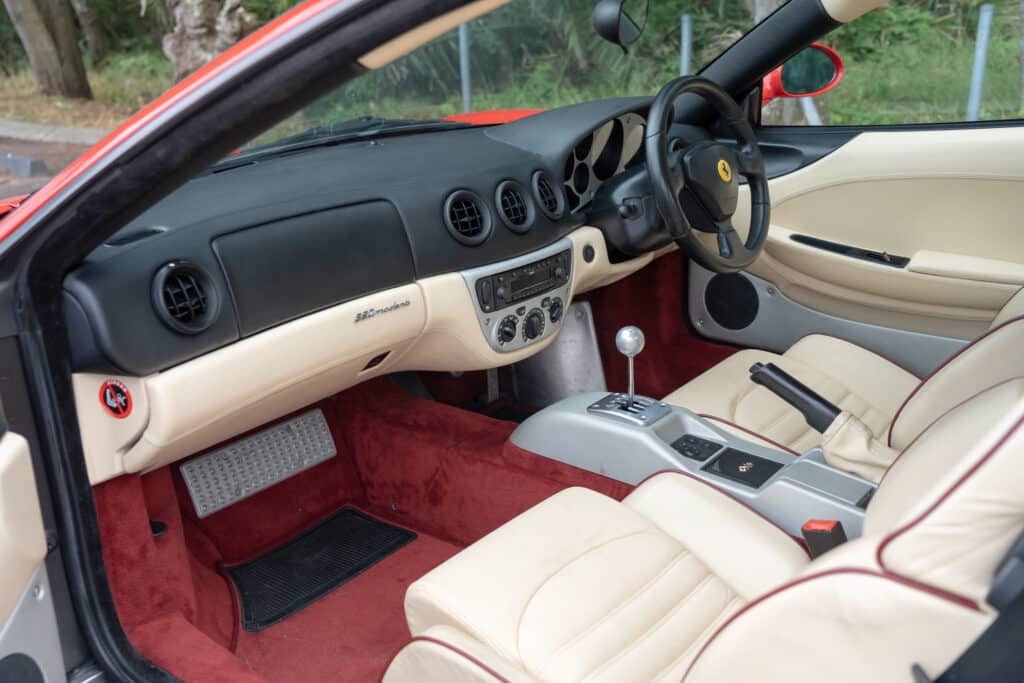
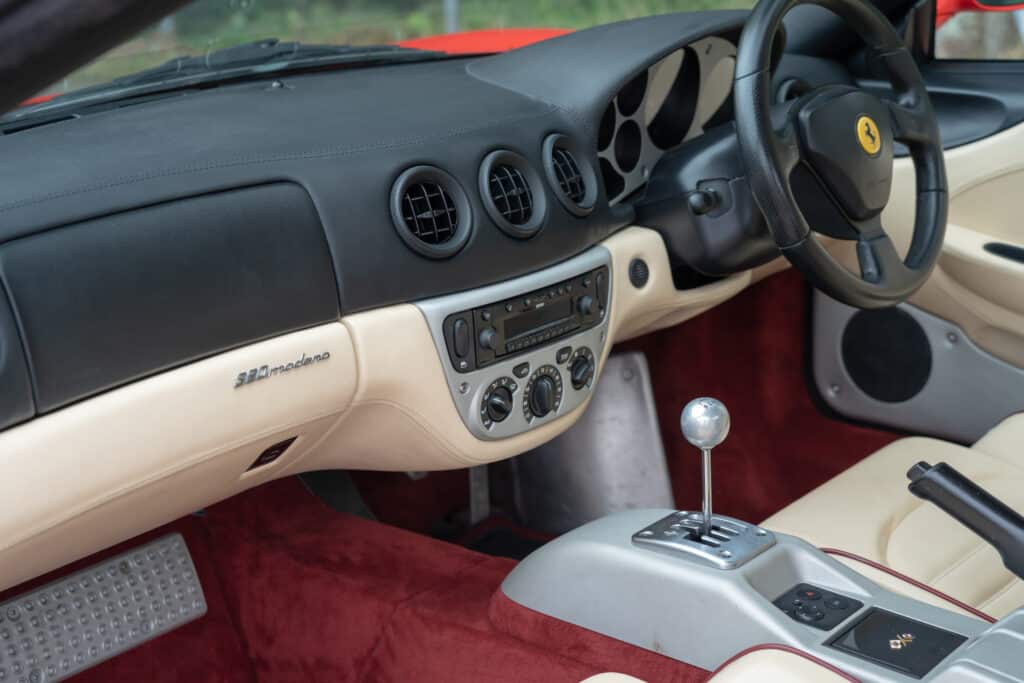
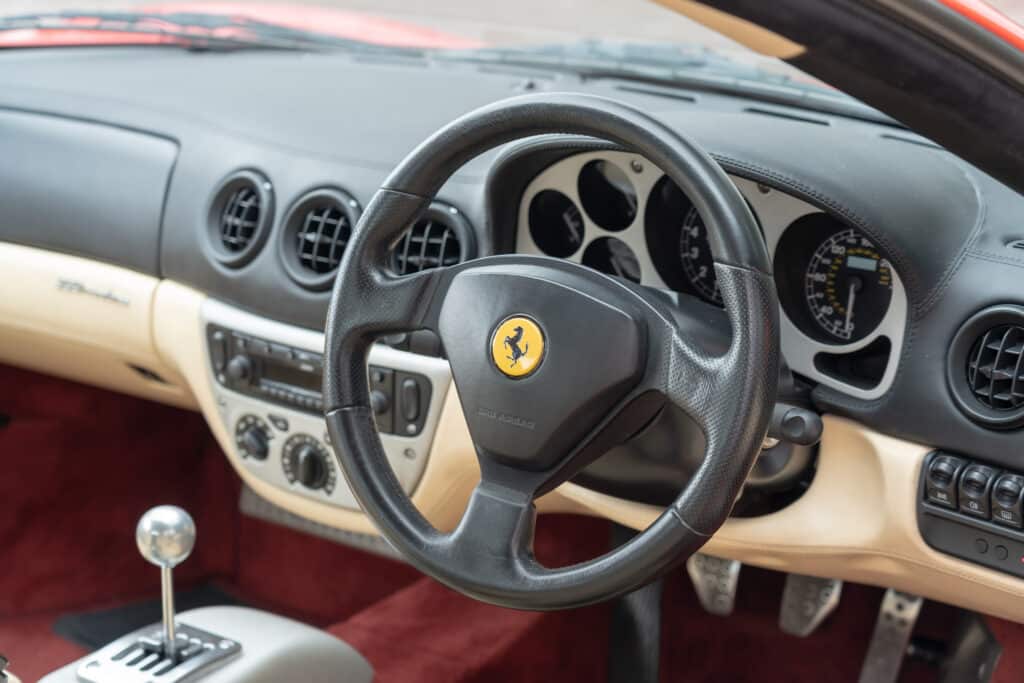
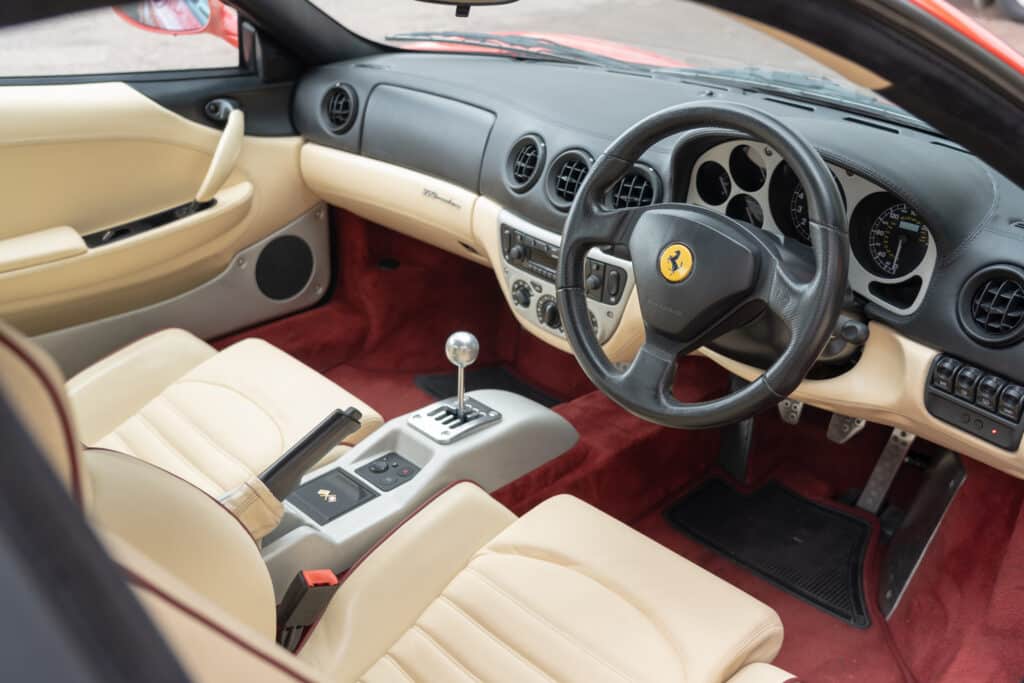
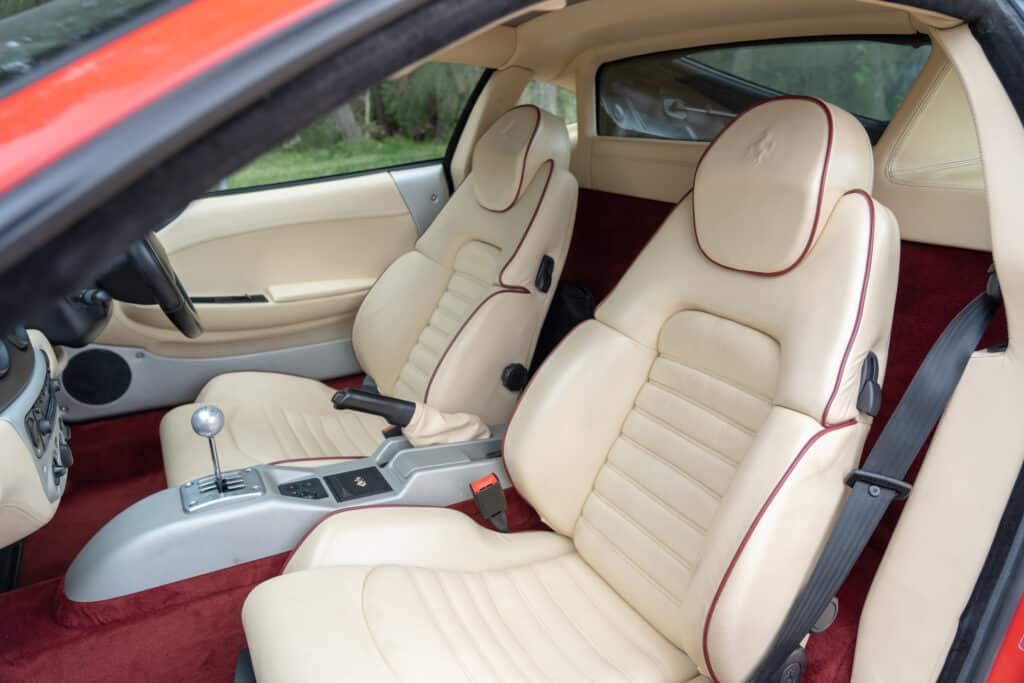
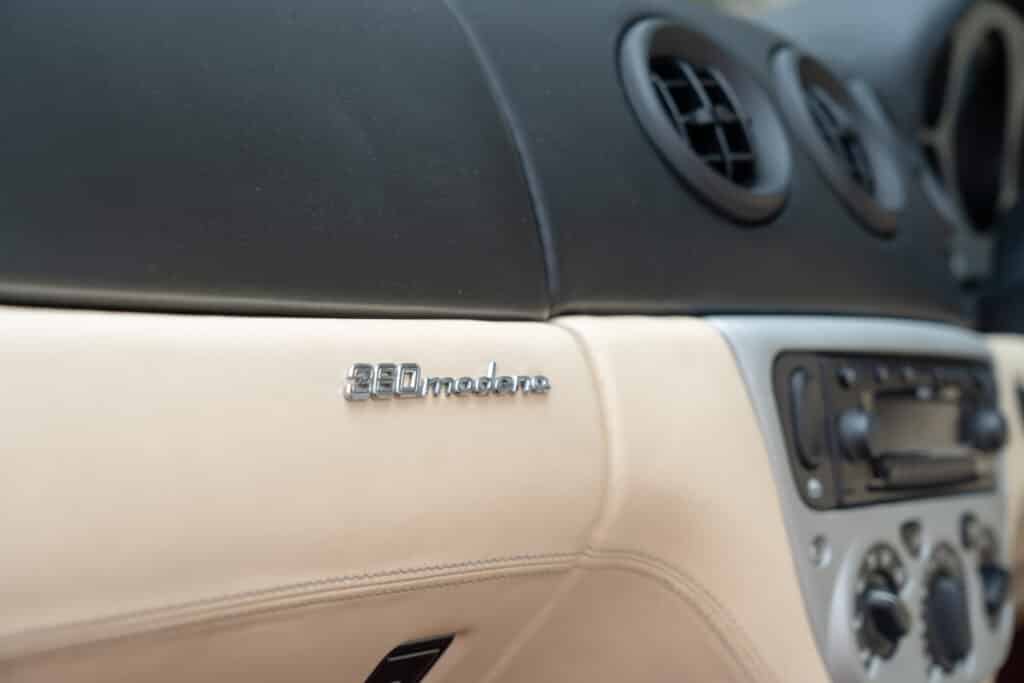
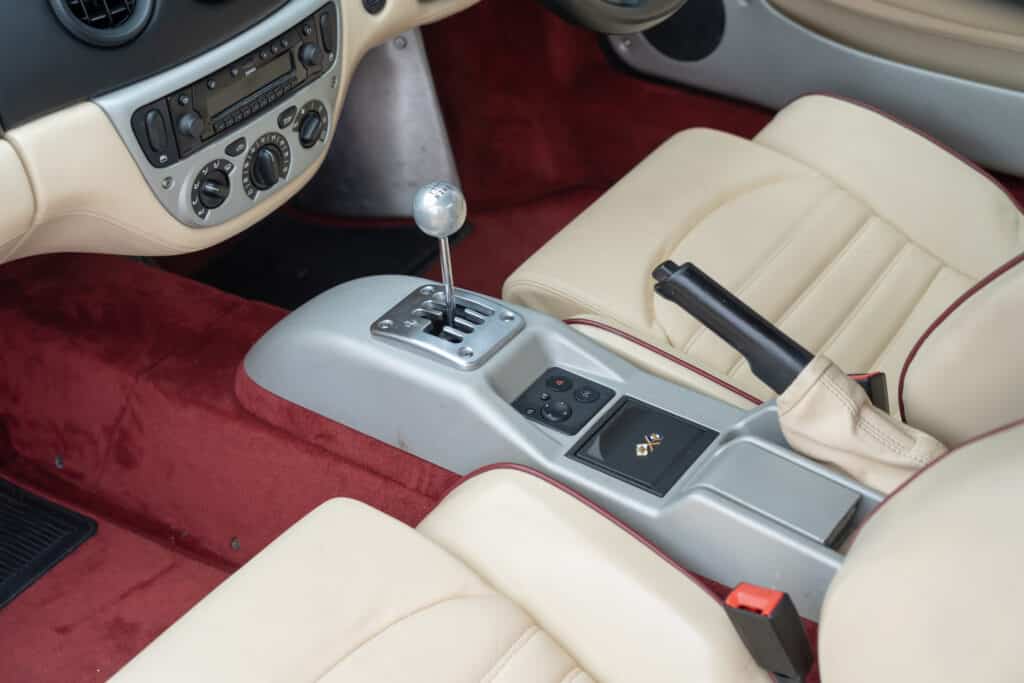
The Ferrari 360, sold in Australia from 1999 to 2005, represented a pivotal moment in Ferrari’s history. It was the brand’s first truly modern mid-engined V8 supercar, replacing the F355 and shifting away from traditional construction methods by introducing an all-aluminium spaceframe chassis making it significantly lighter and stiffer, while improving driving dynamics, reliability, and, shockingly for a Ferrari at the time, day-to-day usability. But don’t get the wrong idea, the 360 might be more approachable than its predecessors, but it’s still a loud, low-slung Italian thoroughbred that now over 20 years old, requires fastidious (and often expensive) care and attention.
It was offered locally in three key variants: the 360 Modena coupe, the 360 Spider convertible, and later in its life, the hardcore, track-focused Challenge Stradale. The Modena and Spider came with either a classic six-speed gated manual transmission or Ferrari’s single-clutch “F1” paddle-shift automated manual. While the F1 gearbox is the more common option, it’s also the one that’s aged less gracefully, both in terms of driving dynamics and long term reliability. The manual, on the other hand, is incredibly rare and now in huge demand, with prices rising accordingly.
Power in all versions comes from a high-revving naturally aspirated flat-plane crank 3.6-litre V8 mounted behind the seats with the Challenge Stradale providing a few extra prancing horses over the Modena and Spider. The mechanical package also included a double-wishbone suspension setup and hydraulic power steering that requires the very best alignment and geometry settings and premium performance rubber to be at its best.
In the Challenge Stradale, everything was dialled up to eleven, firmer suspension, more aggressive aerodynamics, carbon-ceramic brakes, significant weight savings, and noise levels and asking prices that border on the antisocial.
Inside, the 360 is very much a blend of late-‘90s Ferrari quirk with a surprising amount of ergonomic logic. The layout is simple and focused, with leather, aluminium and carbon fibre finishes depending on spec, and it was one of the first Ferraris where the driving position actually made sense for taller people. Equipment is sparse by modern standards, there’s air conditioning, some had a very basic stereo, and if you’re lucky, electric seats. It’s important to note that the interior spec can have an impact on residuals, if you’re buying with investment in mind, maybe avoid the more overt trim options.
The 360 sat as Ferrari’s ‘entry-level’ car in its day, sitting below the front-engined V12 grand tourers like the 550 Maranello and later the 612 Scaglietti. But calling the 360 entry-level almost feels like an insult, because this thing still delivers an experience that’s special even by today’s standards. It’s raw, analog, mechanical, and engaging in a way that most modern supercars simply aren’t. You feel every part of the car working with or against you, and when everything clicks, it’s an incredibly special experience.
In the current market, the Ferrari 360 is widely tipped to become a future classic, with prices already creeping upward, especially for manual and Challenge Stradale examples. But if you’re considering buying one, originality and maintenance history are absolutely critical. To have a shot at strong appreciation, and to avoid financial ruin, a 360 needs to be in as close to factory-original condition as possible, with an immaculate, documented service history and preferably no aftermarket modifications. A questionable service past, missing books, or even just a few unsavoury modifications can wipe tens of thousands off its potential value, and may be a red flag for deeper issues.
Running costs are still properly Ferrari. Yes, the 360 is more reliable than the F355, but it still can be guilty of a range of issues, many of which require specialist care. We detail in our “what goes wrong” section what you need to look out for.
The Ferrari 360 might not be perfect, it’s expensive to run, it’s not packed with features, and it’ll punish you if neglected (or even if rarely driven) but when it’s right, it’s one of the most engaging, emotional, and flat-out special cars you can own. Just make sure it’s the right one.
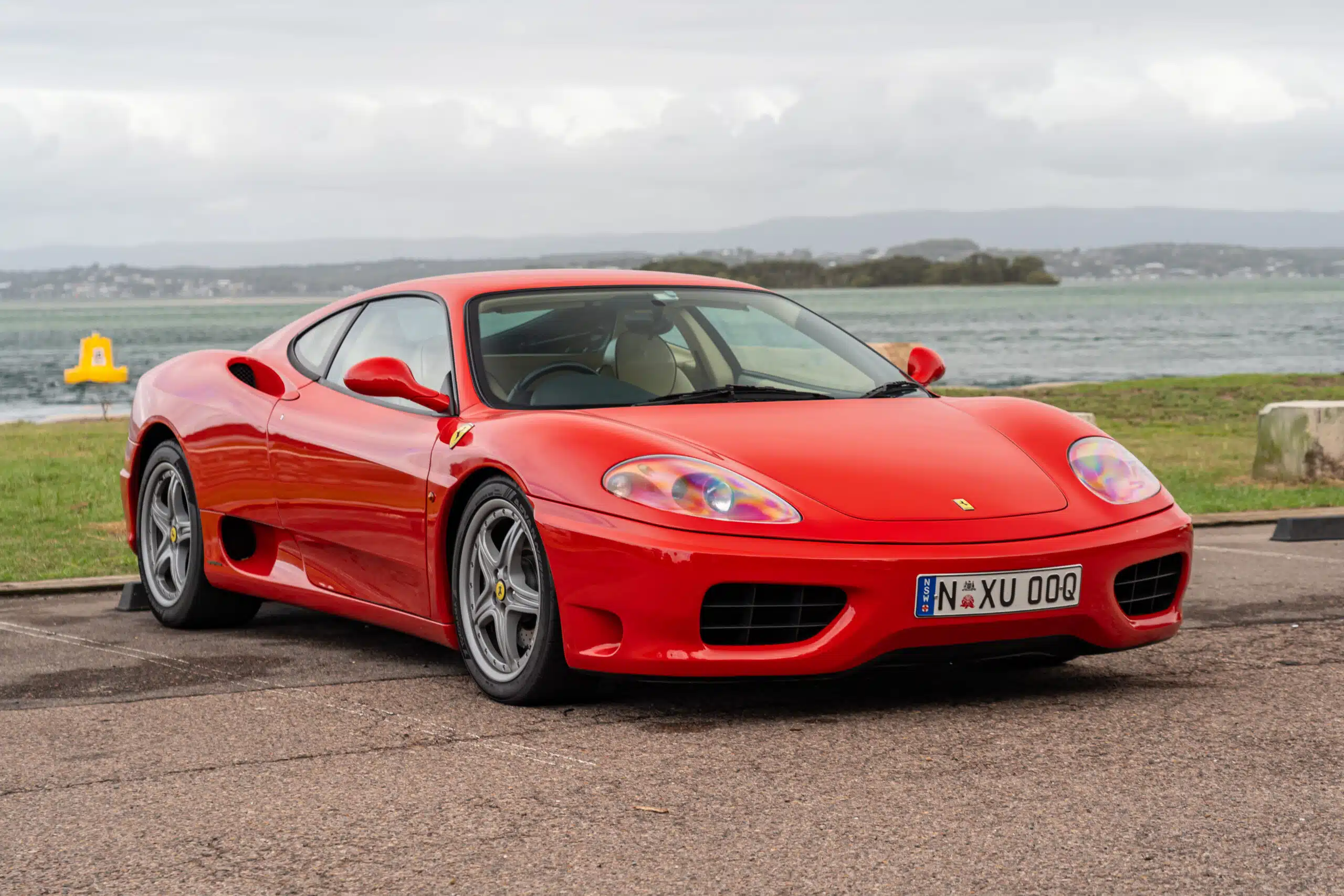
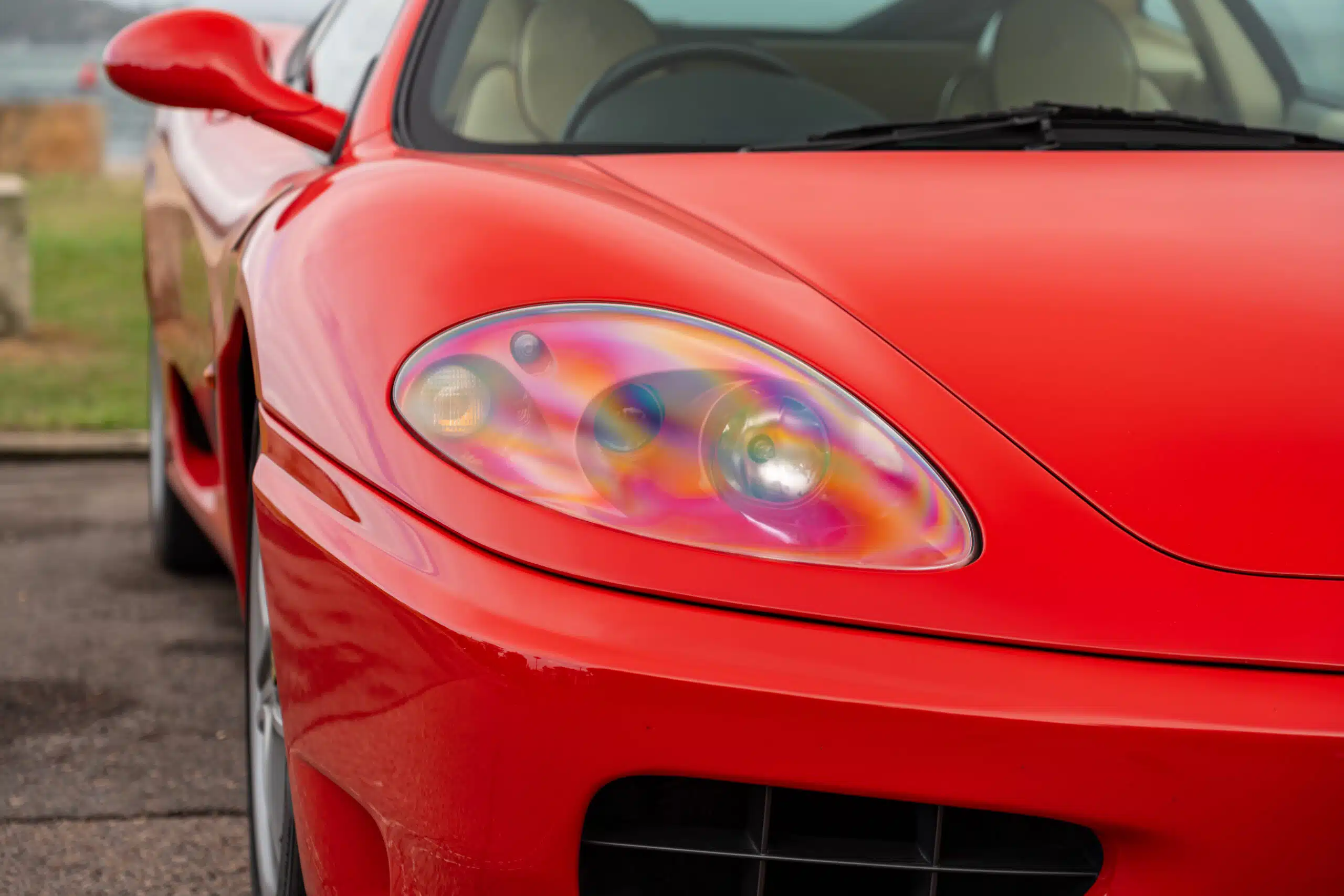
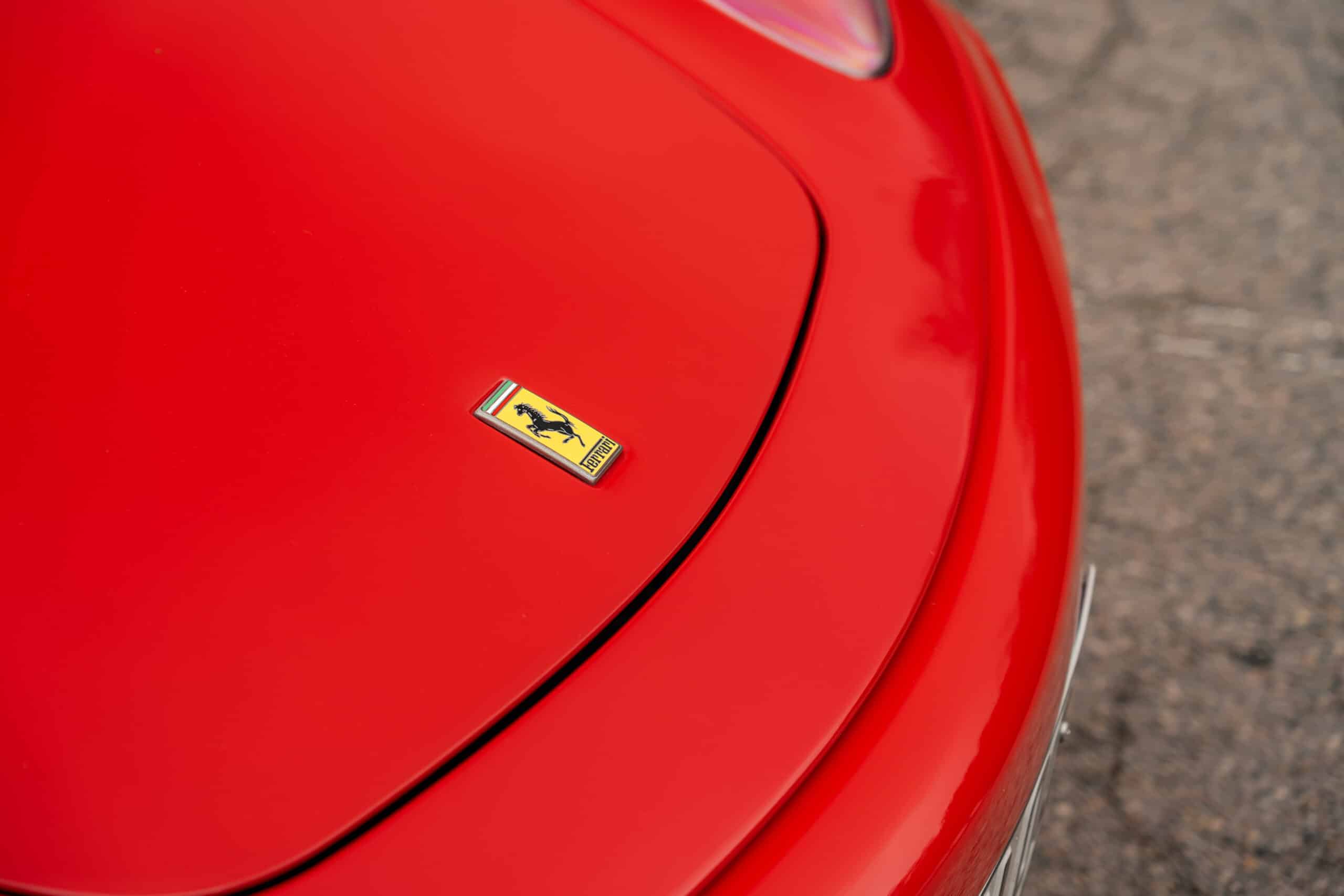
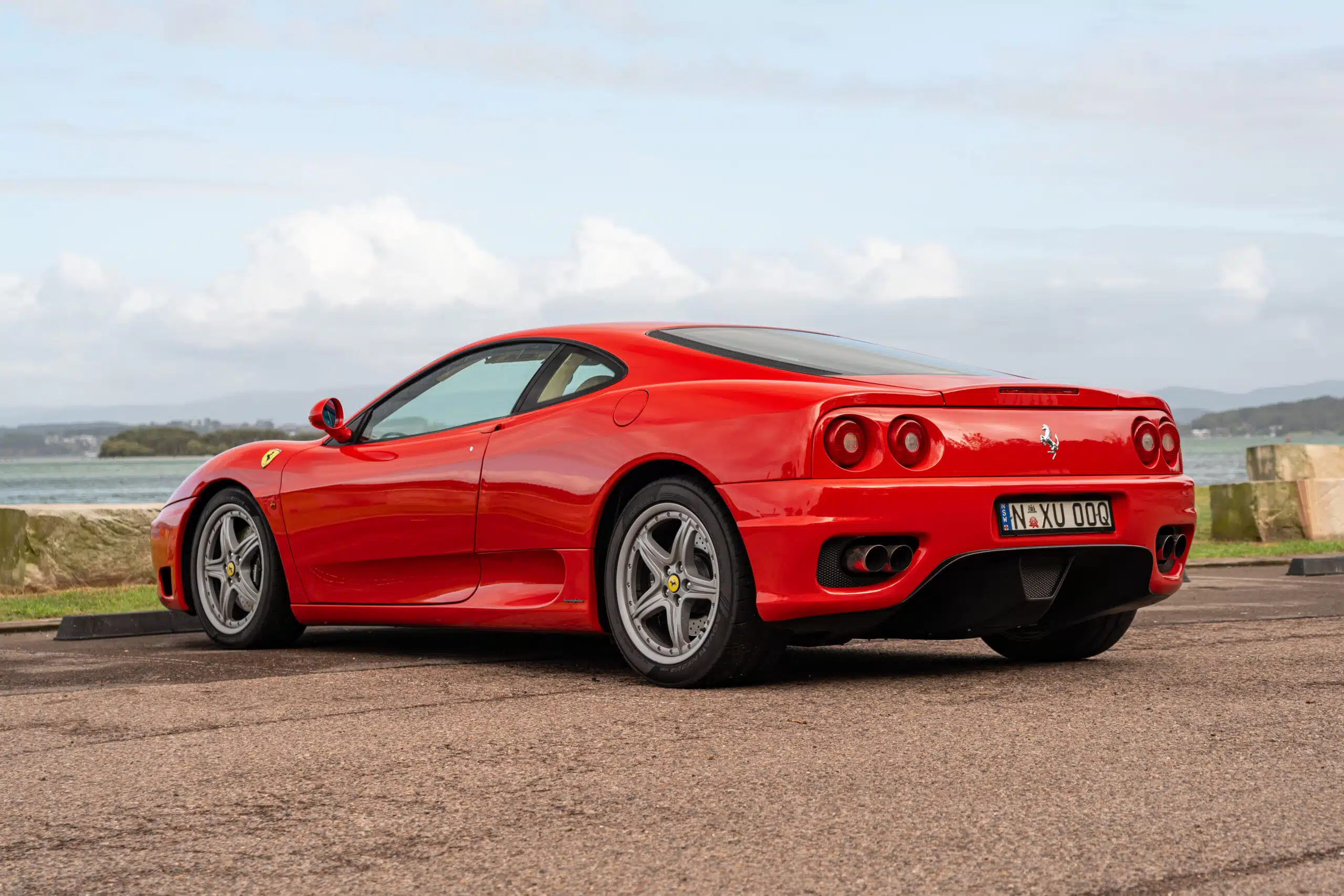
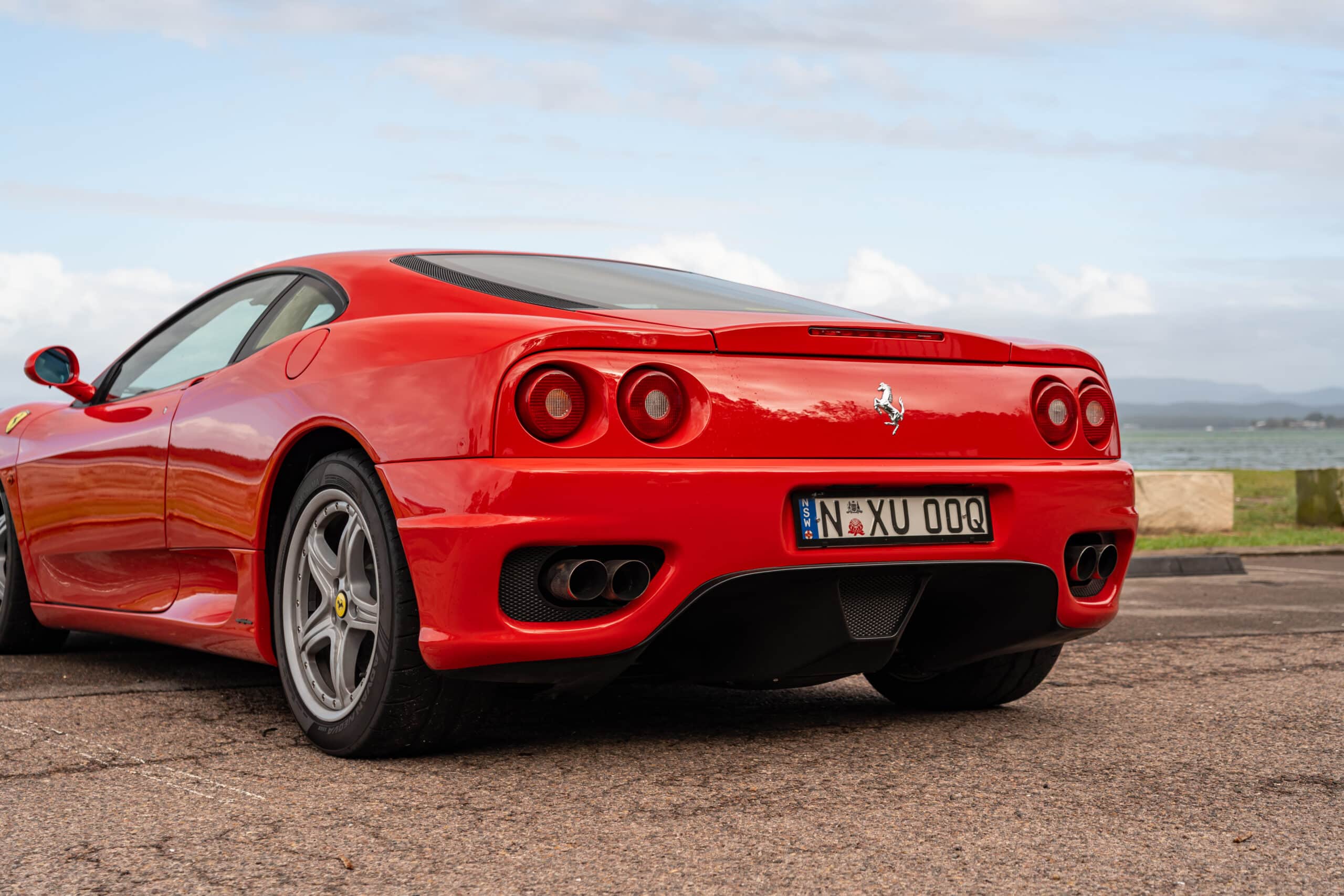
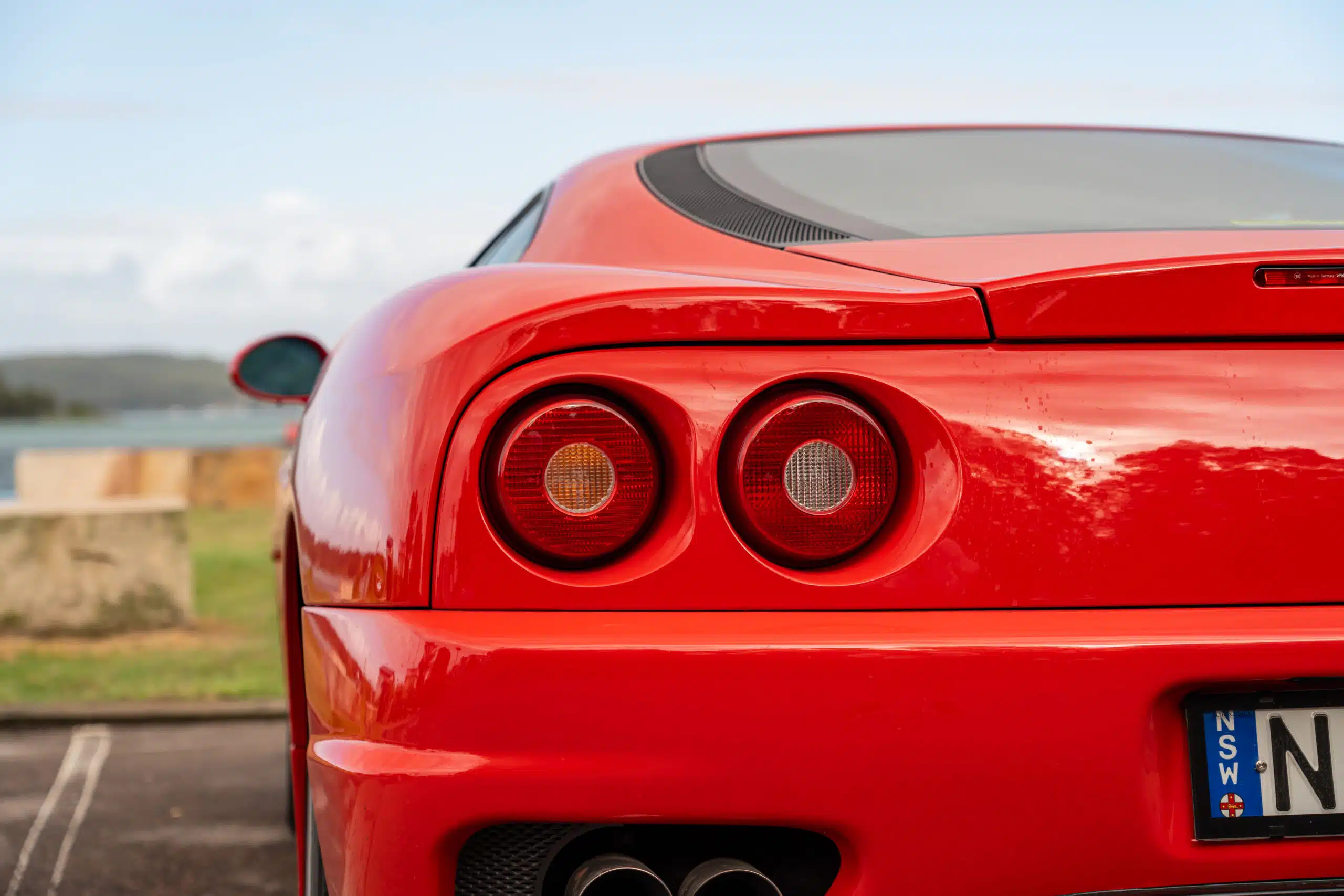
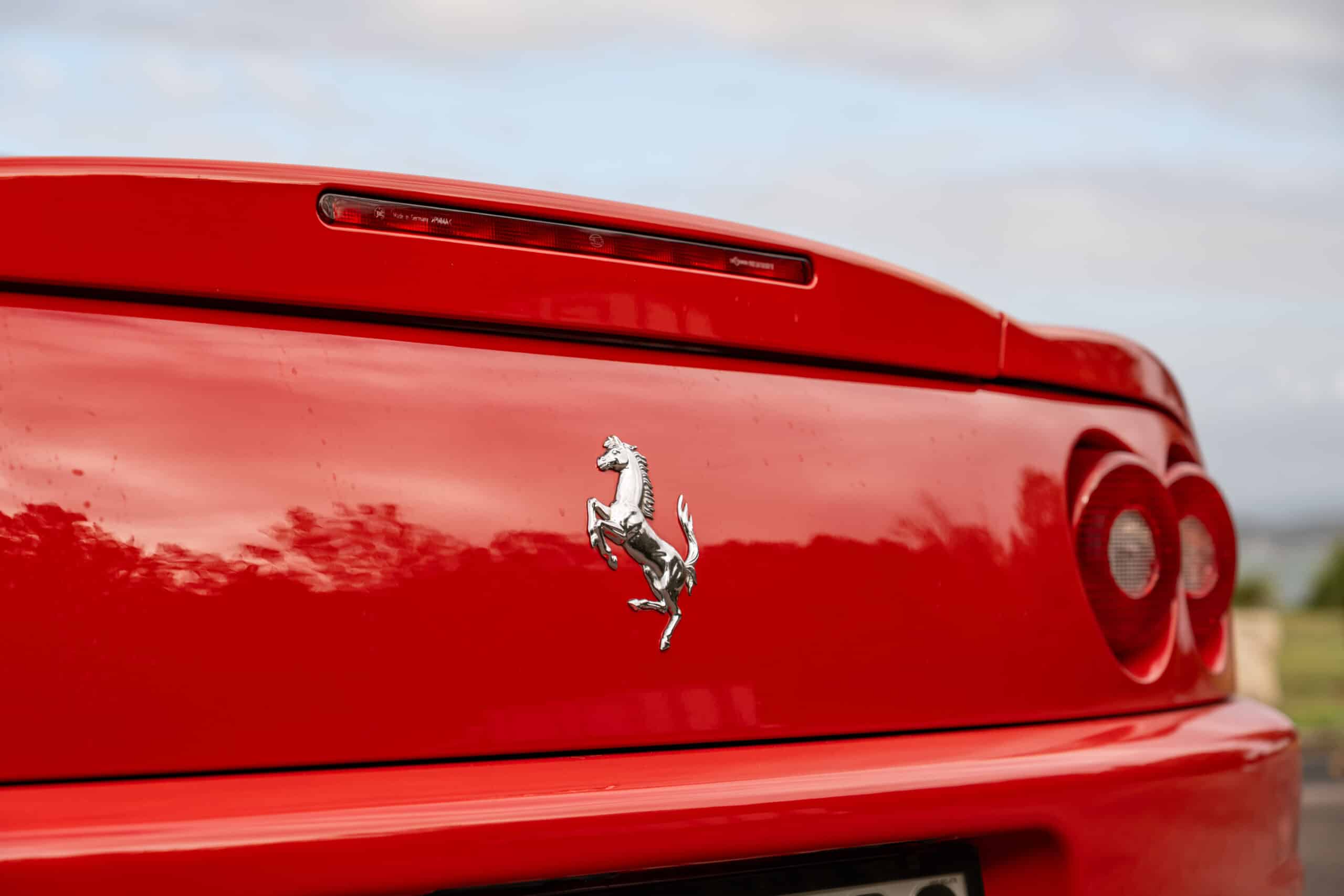
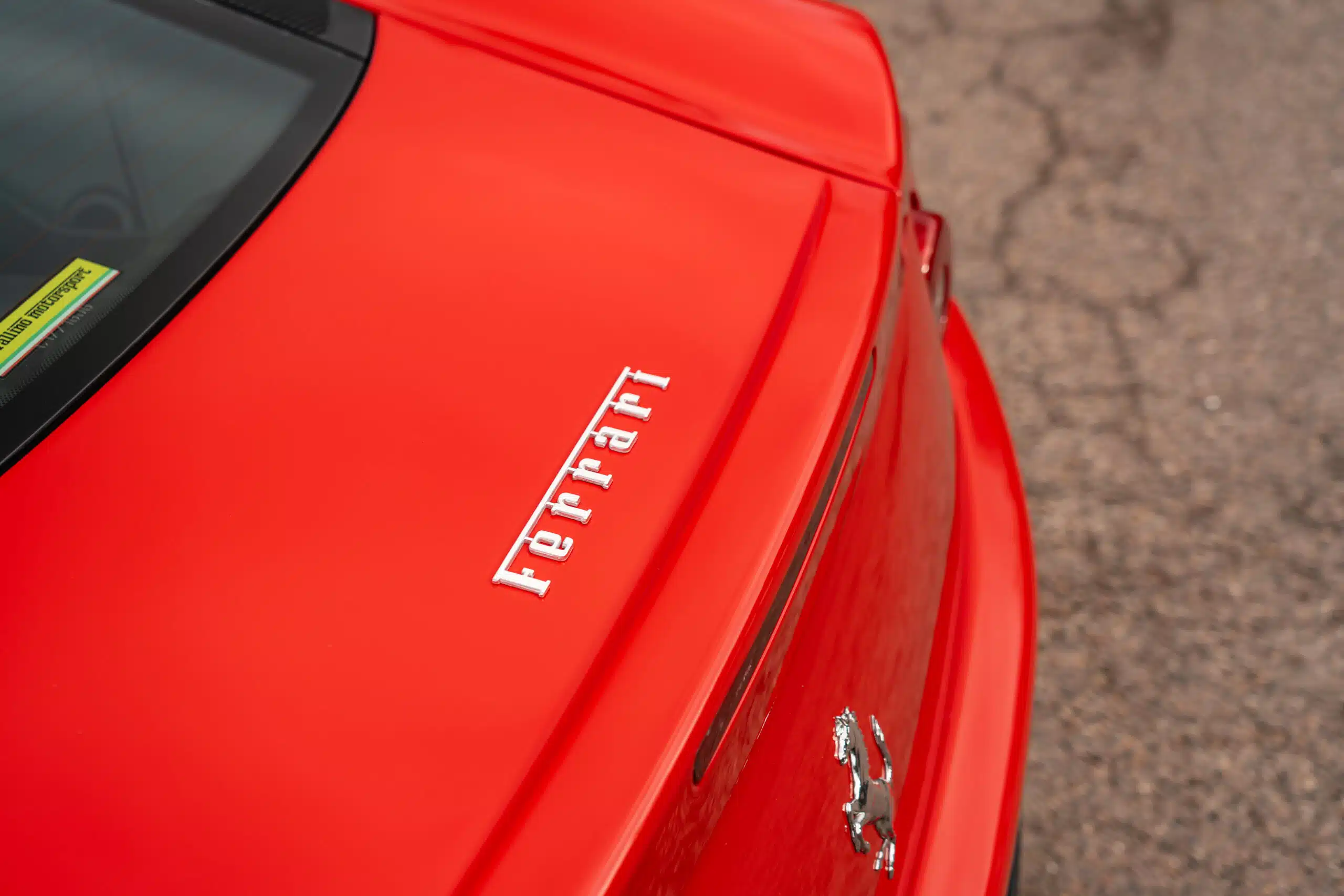

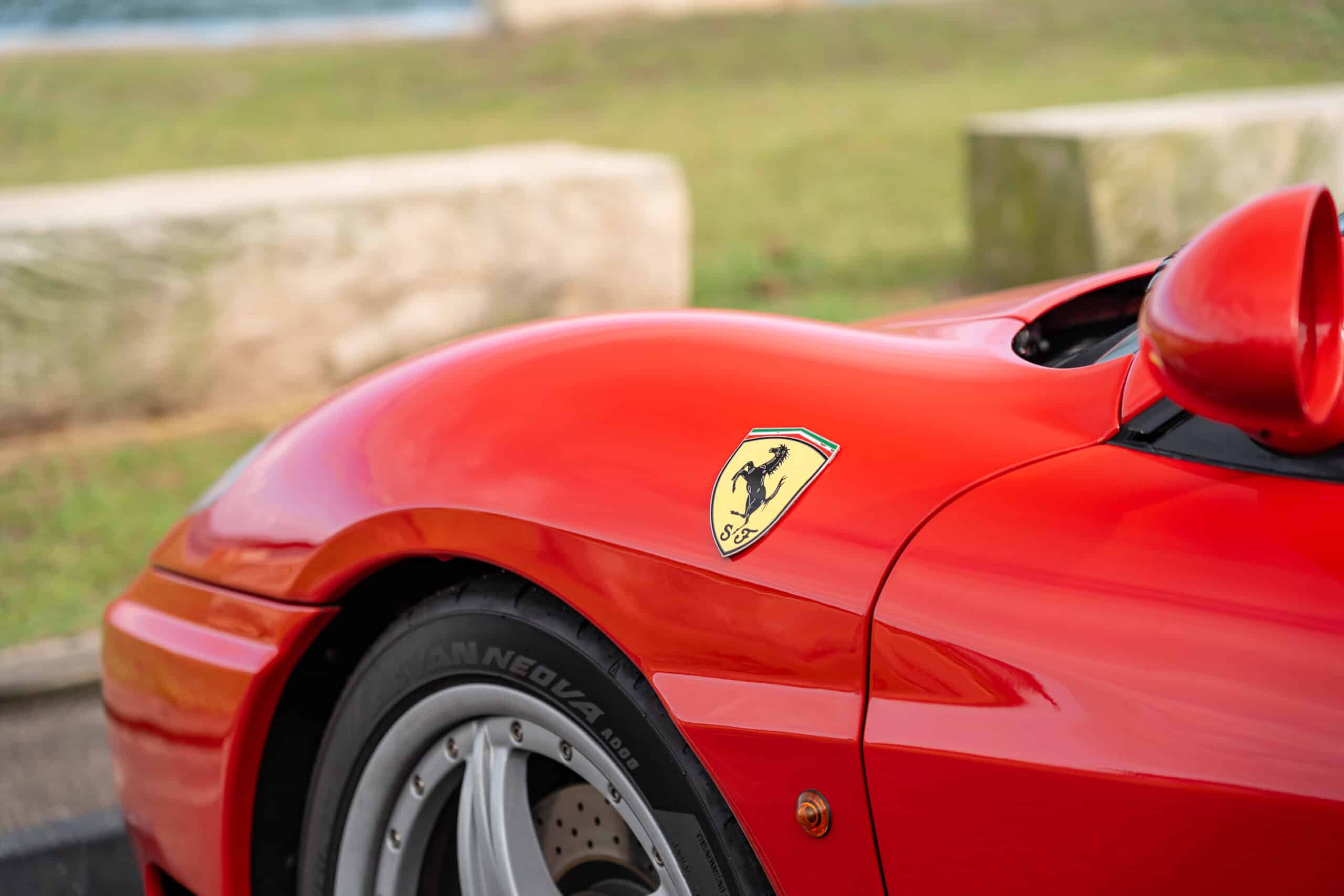

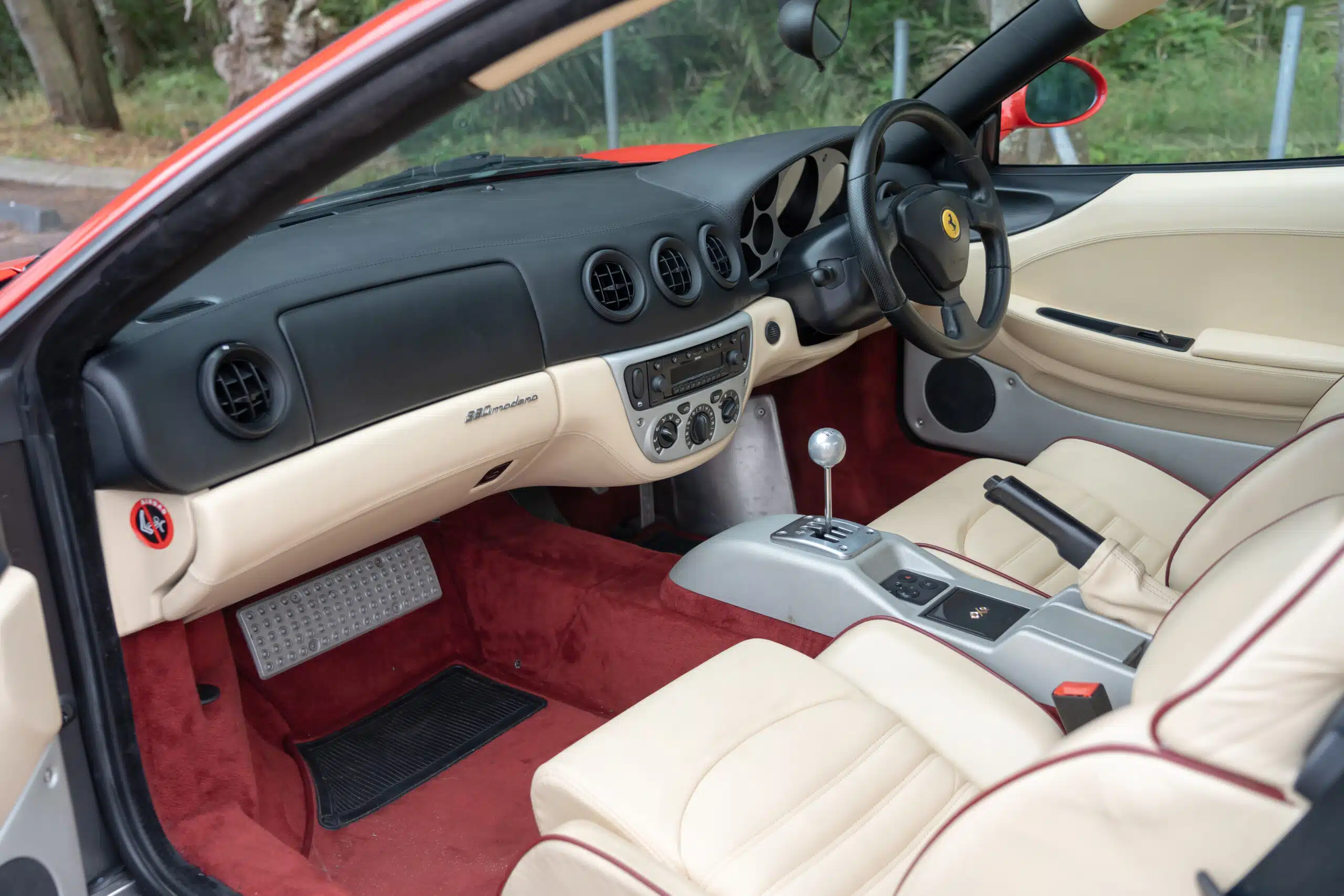
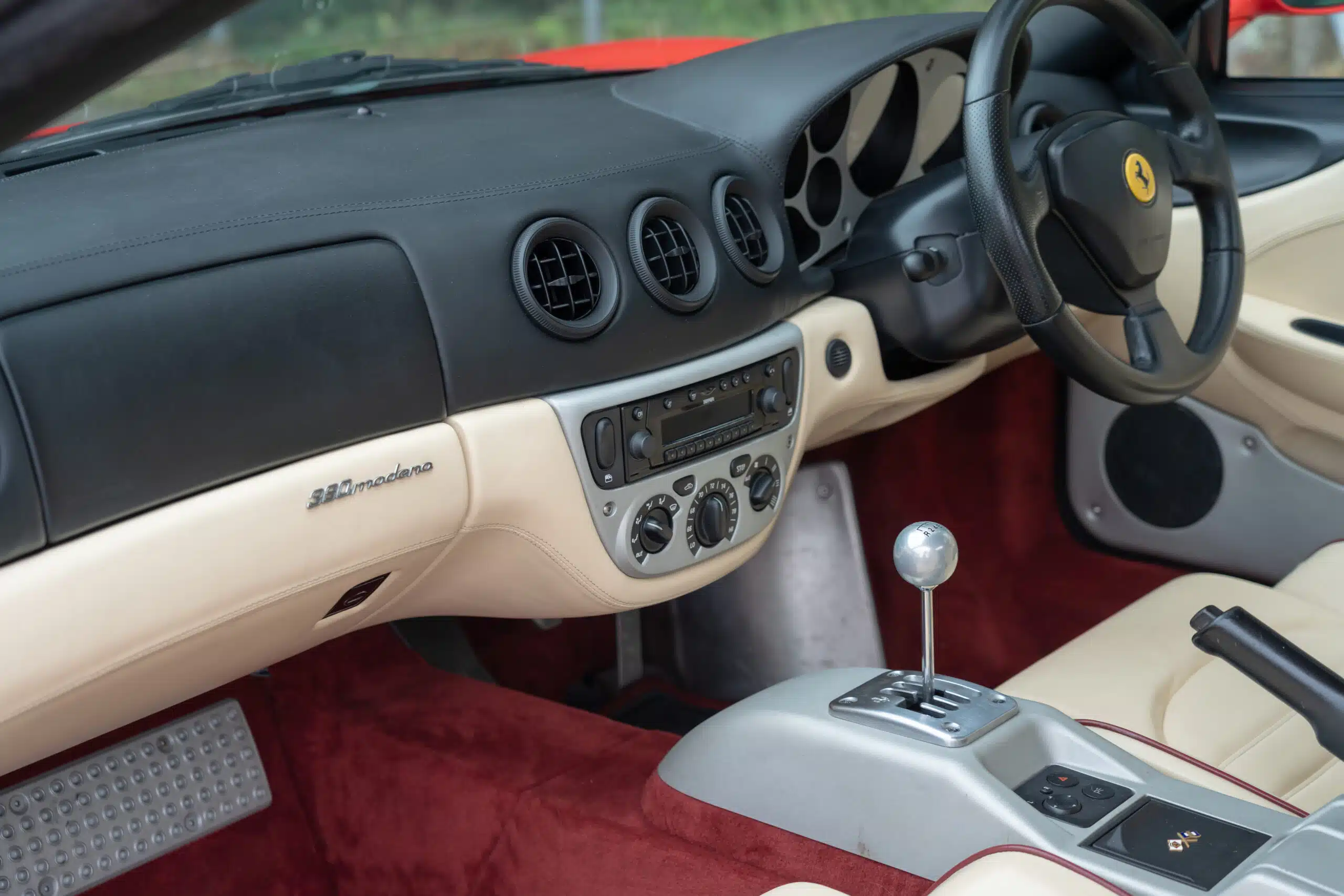
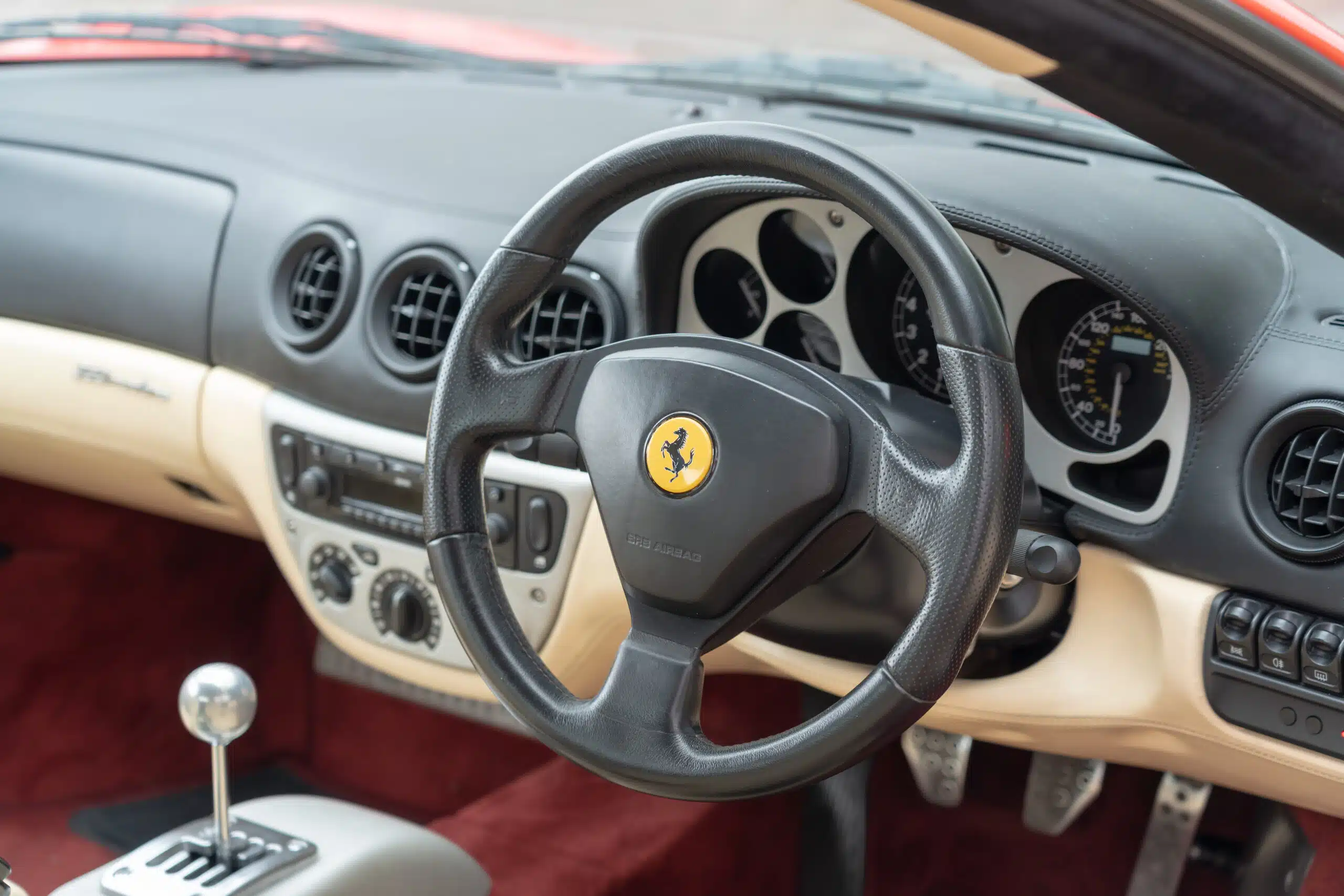
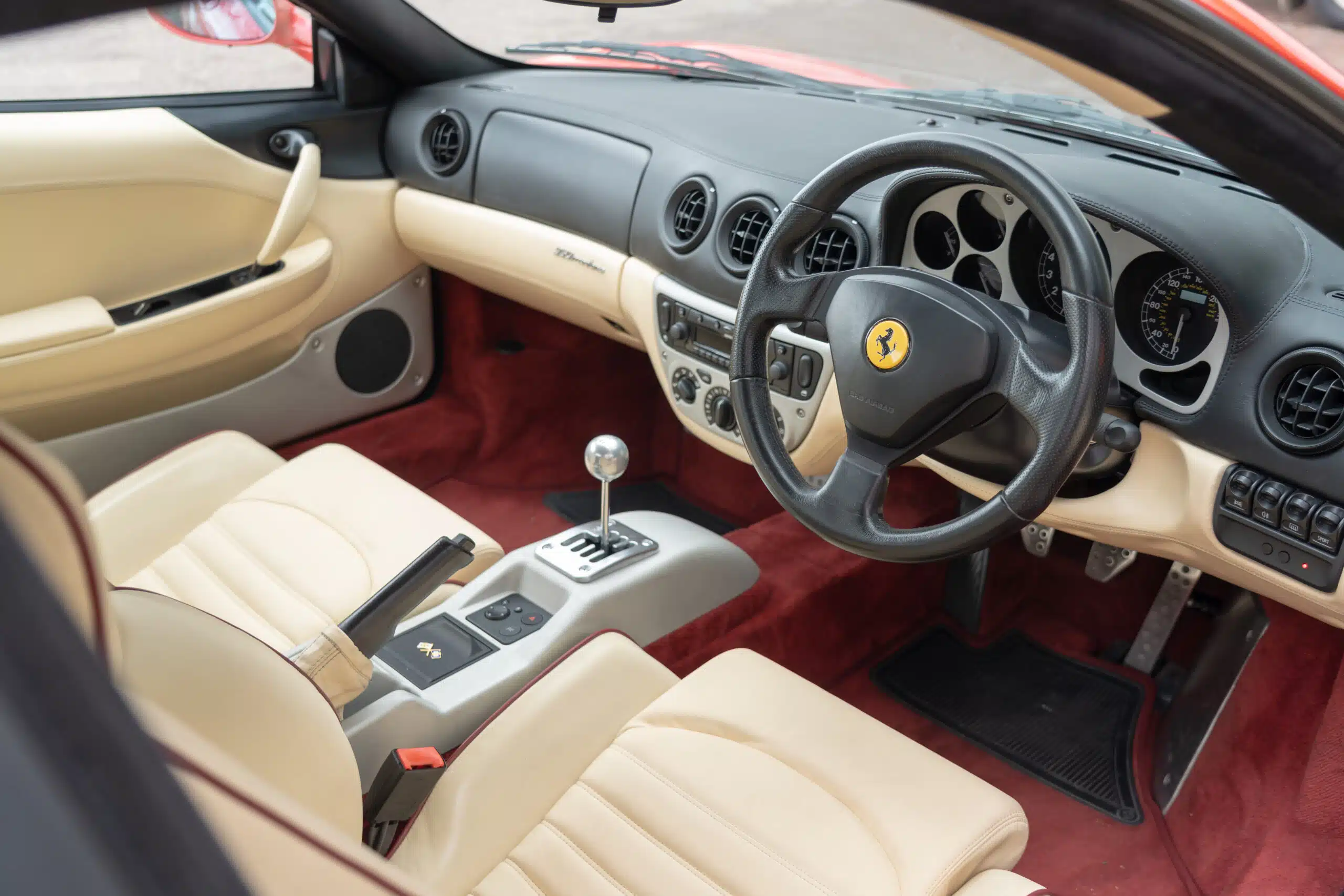
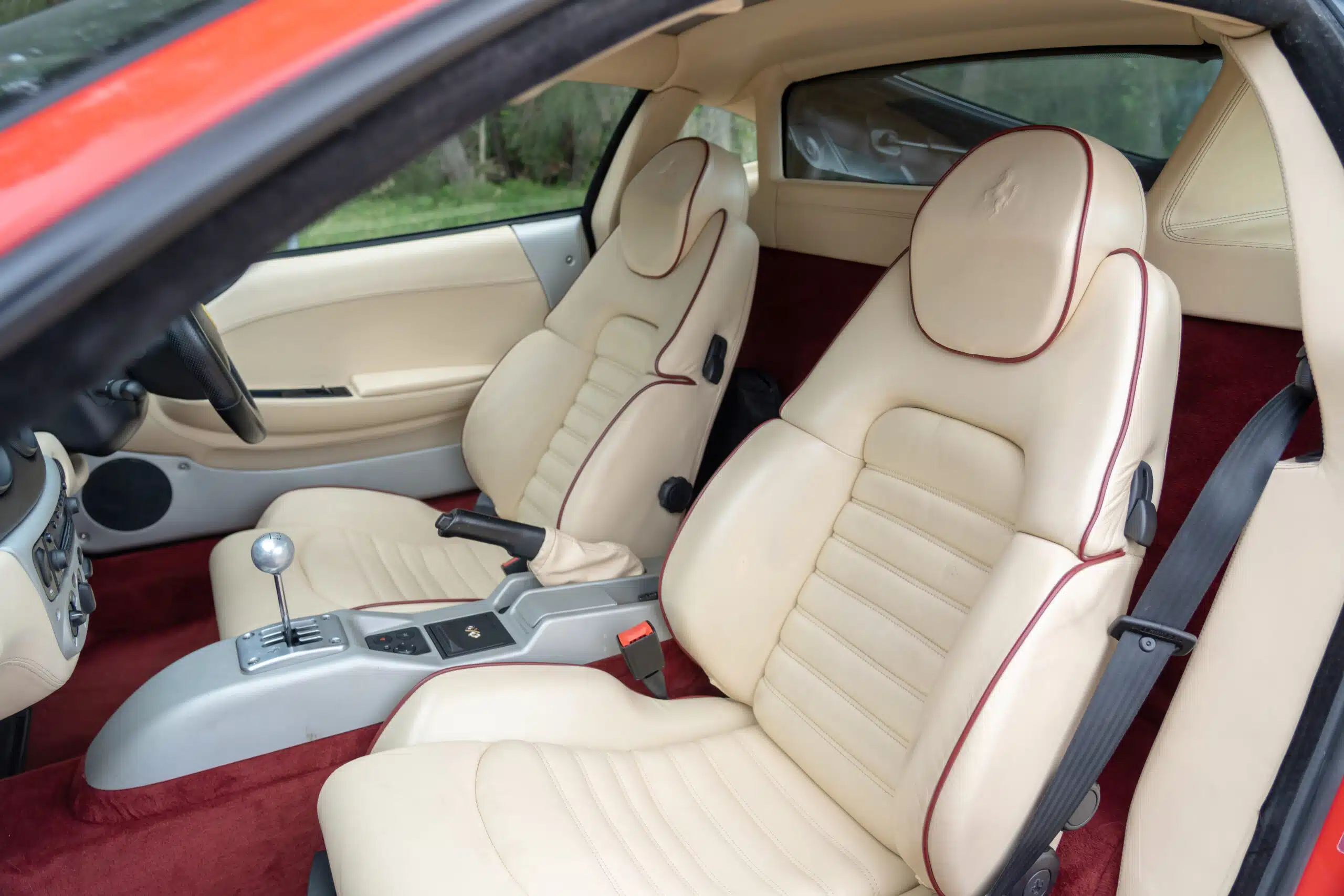
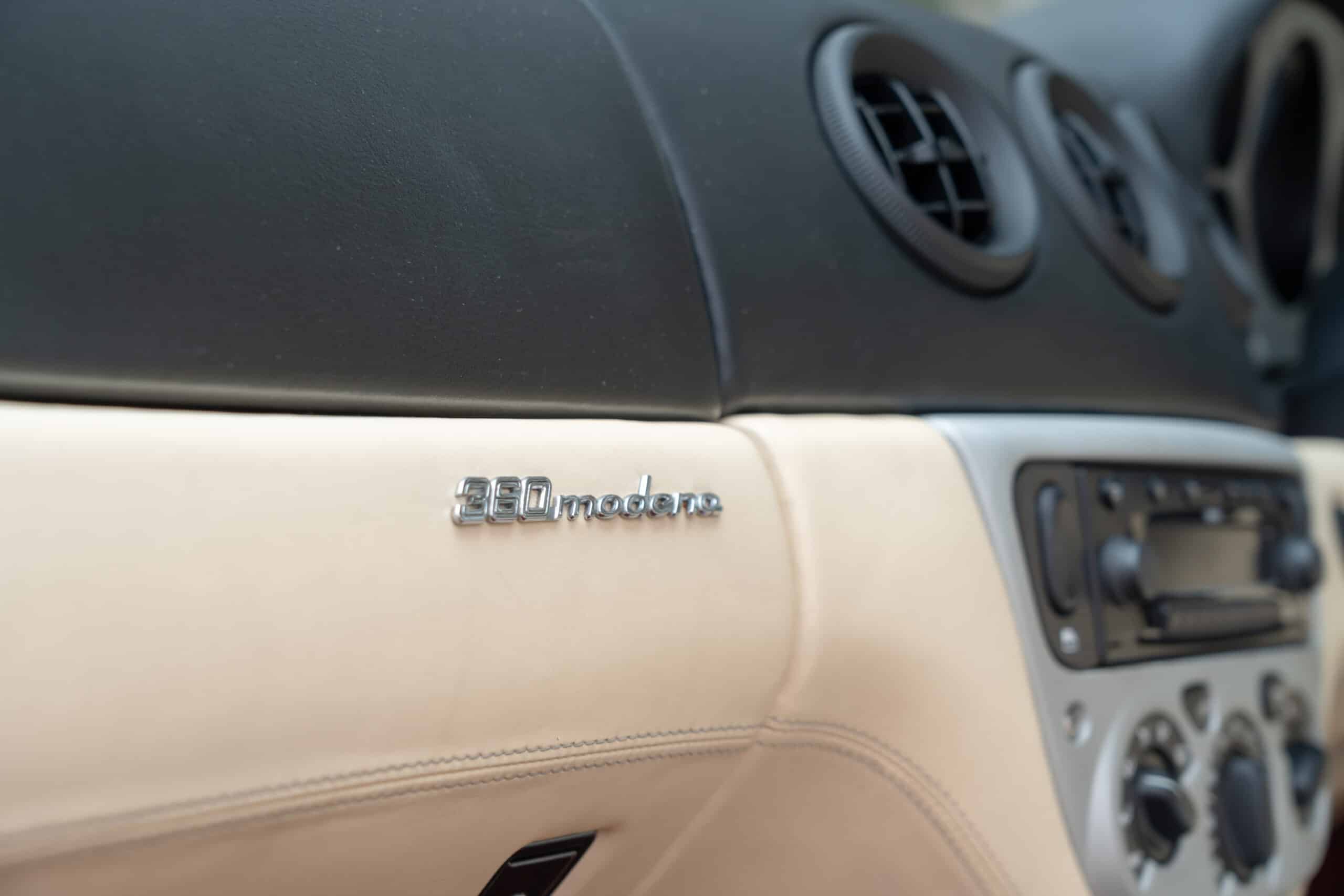
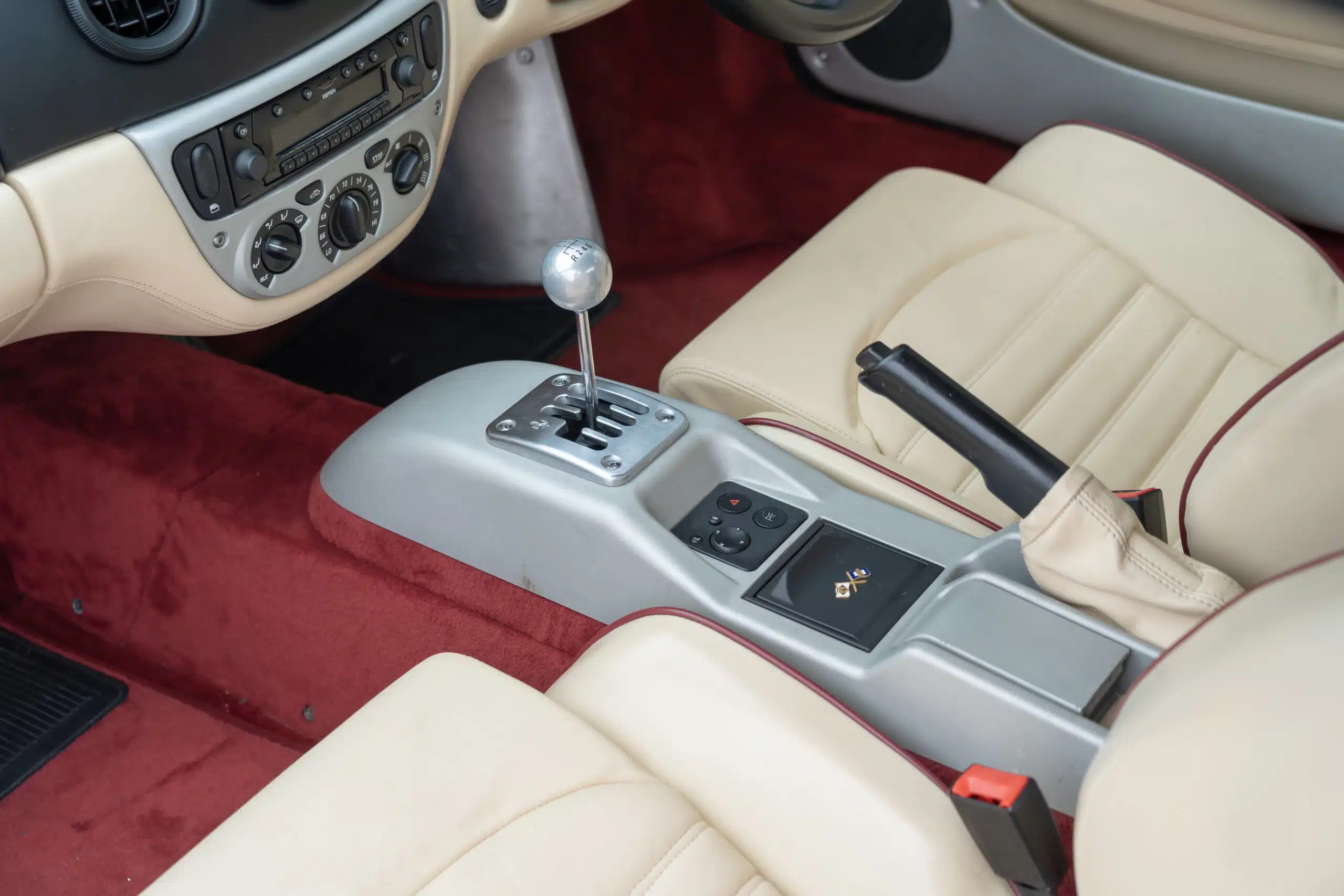


















Exterior
Exterior
Interior
Mechanically
Transmissions
Suspension
Overall, a poorly maintained 360 can turn from dream car into financial nightmare in the blink of an eye. But a properly sorted, original, regularly driven example with a flawless history? That’s the stuff of modern classic legend.
Exterior
Interior
Mechanically
Transmissions
Suspension
Overall, a poorly maintained 360 can turn from dream car into financial nightmare in the blink of an eye. But a properly sorted, original, regularly driven example with a flawless history? That’s the stuff of modern classic legend.
Should you buy a 360? Maybe.
An absolutely thorough maintenance history is non-negotiable, and finding one that remains as close to its original factory specification as possible is crucial. Ideally, you want a later model example that’s been regularly exercised by a mature, passionate owner, not one that’s been neglected, abused, or left to sit unloved for long periods. These sorts of examples tend to cost more upfront, but if you’re serious about 360 ownership, spending that little extra now could save you tens of thousands in the long run.
That said, for the same sort of money many 360s are commanding these days, there are plenty of other genuinely special cars out there that offer similar levels of excitement, but with far fewer maintenance anxieties. The Lotus Exige Sport 420, for example, or the Emira, deliver motorsport-bred handling, stunning looks, and serious brand appeal. And with Toyota-derived engines under the skin, you’re looking at near-bulletproof reliability and affordable maintenance paired with proper enthusiast-grade driving dynamics.
Then there’s Porsche. A 911 ticks many of the same boxes, usable performance, timeless design, strong residuals, but maybe without quite the same sense of theatre the Ferrari offers. Step into a Cayman GT4 or 718 GT4 though, and you’ve got something that delivers a driving experience surprisingly close to that of a 360, only with far greater usability and far fewer ownership headaches.
But this is about supercar style, drama, and presence, right? And when it comes to
Should you buy a 360? Maybe.
An absolutely thorough maintenance history is non-negotiable, and finding one that remains as close to its original factory specification as possible is crucial. Ideally, you want a later model example that’s been regularly exercised by a mature, passionate owner, not one that’s been neglected, abused, or left to sit unloved for long periods. These sorts of examples tend to cost more upfront, but if you’re serious about 360 ownership, spending that little extra now could save you tens of thousands in the long run.
That said, for the same sort of money many 360s are commanding these days, there are plenty of other genuinely special cars out there that offer similar levels of excitement, but with far fewer maintenance anxieties. The Lotus Exige Sport 420, for example, or the Emira, deliver motorsport-bred handling, stunning looks, and serious brand appeal. And with Toyota-derived engines under the skin, you’re looking at near-bulletproof reliability and affordable maintenance paired with proper enthusiast-grade driving dynamics.
Then there’s Porsche. A 911 ticks many of the same boxes, usable performance, timeless design, strong residuals, but maybe without quite the same sense of theatre the Ferrari offers. Step into a Cayman GT4 or 718 GT4 though, and you’ve got something that delivers a driving experience surprisingly close to that of a 360, only with far greater usability and far fewer ownership headaches.
But this is about supercar style, drama, and presence, right? And when it comes to that, what about the Audi R8? For the money a 360 is asking these days, you could easily be in a later model V10 R8 and let’s be honest, ten cylinders trumps eight, doesn’t it? Factor in that the R8 is newer, easier to live with, likely more affordable to maintain in many respects, and you’ve got a compelling alternative that delivers all the looks and noise of a proper exotic, with fewer of the compromises.
Still, it’s not a Ferrari.
Should you buy a 360? Maybe.
An absolutely thorough maintenance history is non-negotiable, and finding one that remains as close to its original factory specification as possible is crucial. Ideally, you want a later model example that’s been regularly exercised by a mature, passionate owner, not one that’s been neglected, abused, or left to sit unloved for long periods. These sorts of examples tend to cost more upfront, but if you’re serious about 360 ownership, spending that little extra now could save you tens of thousands in the long run.
That said, for the same sort of money many 360s are commanding these days, there are plenty of other genuinely special cars out there that offer similar levels of excitement, but with far fewer maintenance anxieties. The Lotus Exige Sport 420, for example, or the Emira, deliver motorsport-bred handling, stunning looks, and serious brand appeal. And with Toyota-derived engines under the skin, you’re looking at near-bulletproof reliability and affordable maintenance paired with proper enthusiast-grade driving dynamics.
Then there’s Porsche. A 911 ticks many of the same boxes, usable performance, timeless design, strong residuals, but maybe without quite the same sense of theatre the Ferrari offers. Step into a Cayman GT4 or 718 GT4 though, and you’ve got something that delivers a driving experience surprisingly close to that of a 360, only with far greater usability and far fewer ownership headaches.
But this is about supercar style, drama, and presence, right? And when it comes to that, what about the Audi R8? For the money a 360 is asking these days, you could easily be in a later model V10 R8 and let’s be honest, ten cylinders trumps eight, doesn’t it? Factor in that the R8 is newer, easier to live with, likely more affordable to maintain in many respects, and you’ve got a compelling alternative that delivers all the looks and noise of a proper exotic, with fewer of the compromises.
Still, it’s not a Ferrari.
Have ultimate peace of mind when buying a used car by purchasing an official PPSR report.
Please note that pricing information is subject to fluctuations in the automotive market.
Information correct as of Apr 11, 2025.
The advice provided on this website is general advice only. It has been prepared without taking into account your objectives, financial situation or needs. Before acting on this advice, you should consider the appropriateness of the advice, having regard to your own objectives, financial situation and needs.
Read our full terms and conditions here.
You are the best, the content in your videos is so helpful, delivered in a great way. Please keep going as for sure you are unique in every way. All the best from Guatemala
L. G. - YouTube
You guys have truly found something wonderful… Loved this channel ever since from the beginning… Will support you guys as long as you guys keep making these wonderful car reviews…
Calvin - YouTube
This is probably the best channel I have ever seen when reviewing vehicles. New or old. The honesty is so appreciated. I’ve been a mechanic for 20 years and I find it very informative when looking for a vehicle for my daughter. Keep up the awesome work.
Jason T. - YouTube
© 2025 ReDriven All Rights Reserved